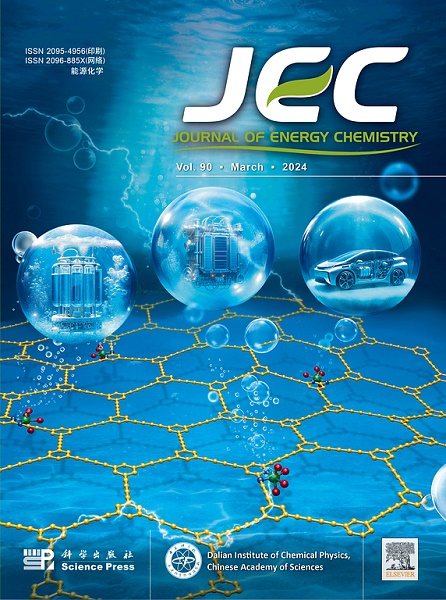Overcoming low-temperature challenges in LIBs: the role of anion-rich solvation sheath in strong solvents
IF 13.1
1区 化学
Q1 Energy
引用次数: 0
Abstract
Lithium-ion batteries (LIBs) face significant limitations in low-temperature environments, with the slow interfacial de-solvation process and the hindered Li+ transport through the interphase layer emerging as key obstacles beyond the issue of ionic conductivity. This investigation unveils a novel formulation that constructs an anion-rich solvation sheath within strong solvents, effectively addressing all three of these challenges to bolster low-temperature performance. The developed electrolyte, characterized by an enhanced concentration of contact ion pairs (CIPs) and aggregates (AGGs), facilitates the formation of an inorganic-rich interphase layer on the anode and cathode particles. This promotes de-solvation at low temperatures and stabilizes the electrode–electrolyte interphase. Full cells composed of LiNi0.6Co0.2Mn0.2O2 (NCM622) and graphite, when equipped with this electrolyte, showcase remarkable cycle stability and capacity retention, with 93.3% retention after 500 cycles at room temperature (RT) and 95.5% after 120 cycles at −20 °C. This study validates the utility of the anion-rich solvation sheath in strong solvents as a strategy for the development of low-temperature electrolytes.

求助全文
约1分钟内获得全文
求助全文
来源期刊

Journal of Energy Chemistry
CHEMISTRY, APPLIED-CHEMISTRY, PHYSICAL
CiteScore
19.10
自引率
8.40%
发文量
3631
审稿时长
15 days
期刊介绍:
The Journal of Energy Chemistry, the official publication of Science Press and the Dalian Institute of Chemical Physics, Chinese Academy of Sciences, serves as a platform for reporting creative research and innovative applications in energy chemistry. It mainly reports on creative researches and innovative applications of chemical conversions of fossil energy, carbon dioxide, electrochemical energy and hydrogen energy, as well as the conversions of biomass and solar energy related with chemical issues to promote academic exchanges in the field of energy chemistry and to accelerate the exploration, research and development of energy science and technologies.
This journal focuses on original research papers covering various topics within energy chemistry worldwide, including:
Optimized utilization of fossil energy
Hydrogen energy
Conversion and storage of electrochemical energy
Capture, storage, and chemical conversion of carbon dioxide
Materials and nanotechnologies for energy conversion and storage
Chemistry in biomass conversion
Chemistry in the utilization of solar energy
 求助内容:
求助内容: 应助结果提醒方式:
应助结果提醒方式:


